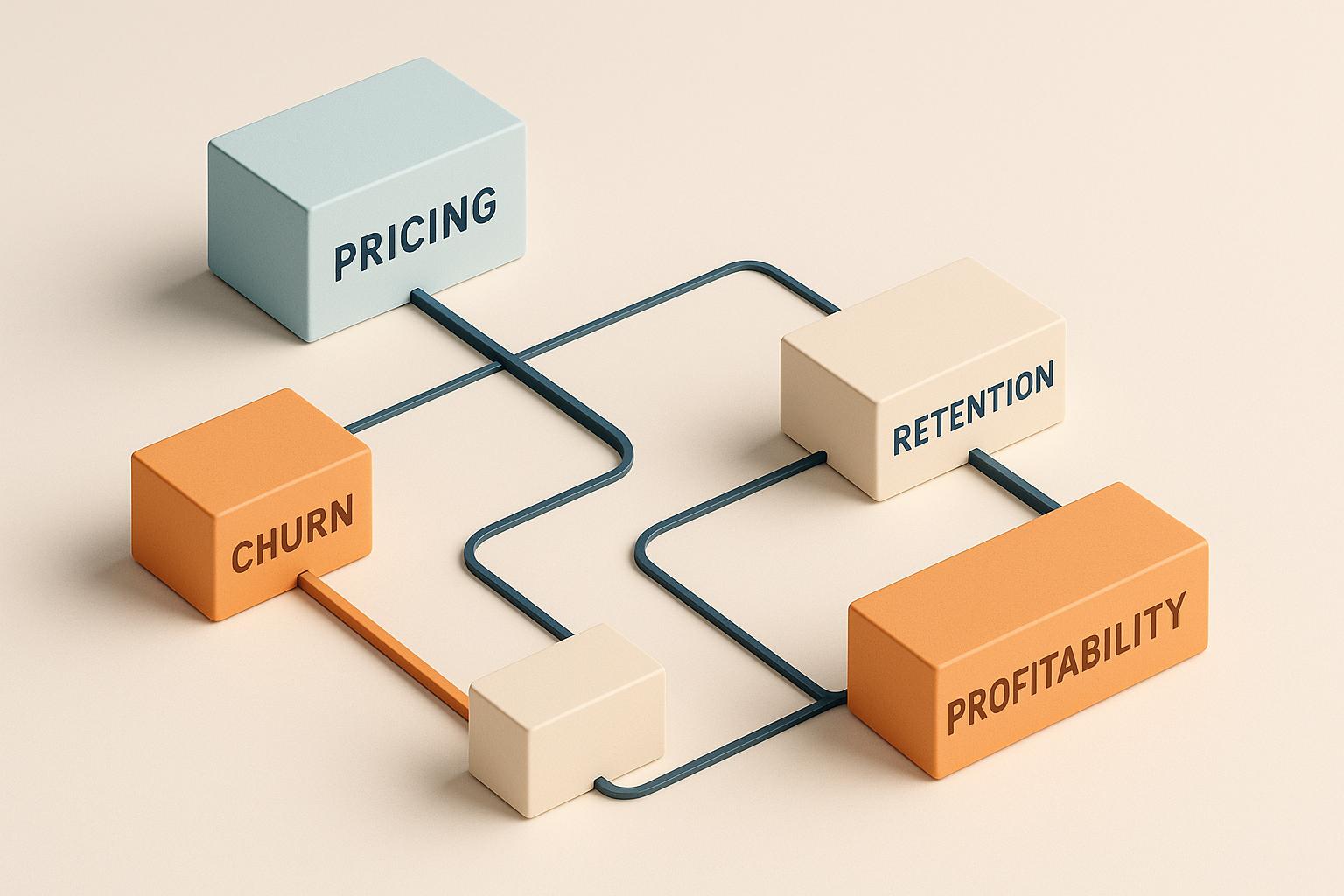Why Mid-Market Infrastructure Offers Alpha Potential

Mid-market infrastructure investments offer higher returns by focusing on smaller-scale projects like regional power plants, water systems, and telecom networks. These assets, typically valued between $50M and $500M, provide opportunities for growth through operational improvements, technology upgrades, and better management. Compared to large-scale infrastructure, mid-market investments face less competition, often leading to better valuations and exclusive deals. Key drivers include:
- Higher Alpha Potential: Achieved by improving operations and addressing inefficiencies.
- Reduced Competition: Large funds often overlook mid-market opportunities.
- Growth Trends: Renewable energy, urbanization, and government initiatives like the $1.2T Infrastructure Investment and Jobs Act support this sector.
- Expertise-Driven Success: Local market knowledge and specialized skills are crucial for identifying undervalued assets.
- Flexible Exits: Options include sales to strategic buyers or integration into larger platforms.
For investors seeking higher returns with manageable risks, mid-market infrastructure offers a strong balance of growth and stability. These investments are particularly appealing in today's low-yield environment.
How Mid-Market Infrastructure Generates Alpha
Mid-market infrastructure investments stand out for their ability to deliver strong returns by focusing on operational improvements, industry expertise, and exclusive deal opportunities. Let’s break down how these factors contribute to generating alpha.
Operational Improvements and Value Enhancement
Mid-market assets often present opportunities for operational upgrades, which can translate into significant cost savings and increased cash flow. For instance, modernizing outdated control systems in a regional power plant can cut maintenance costs, improve reliability, and extend the asset's lifespan. Similarly, upgrading to energy-efficient equipment not only reduces expenses but may also qualify for government incentives tied to clean energy initiatives.
Strategic repositioning is another way to boost value. Take a regional data center as an example: underutilization caused by outdated services or poor marketing can be addressed by introducing higher-margin services and strengthening customer relationships. These changes can lead to improved cash flow and a stronger competitive position.
Risk management also plays a critical role. By implementing robust maintenance programs, diversifying customer bases, and securing long-term contracts, investors can stabilize cash flows and reduce the cost of capital. These measures not only mitigate risks but also enhance the asset’s valuation when it’s time to sell.
Industry Expertise and Local Market Insights
Success in mid-market infrastructure hinges on the ability to deeply understand specific sectors and local market dynamics. Investors with specialized knowledge can identify undervalued assets, anticipate industry trends, and navigate regional regulations effectively. For example, assets in this space often operate under localized rules and rely on established customer relationships. Knowing these nuances allows investors to act decisively, avoid pitfalls, and seize opportunities.
This expertise also sharpens due diligence and risk assessment. Skilled investors are adept at evaluating key operational metrics, management teams, and hidden opportunities, helping them distinguish promising assets from those facing deeper structural issues.
Regulatory knowledge is another advantage. Many mid-market assets are subject to policy changes and rate adjustments. Investors who understand these frameworks can better forecast cash flows and refine operational strategies, ensuring a more stable investment.
Combining sector expertise with local insights also fosters stronger relationships with key stakeholders - whether regulators, customers, or suppliers. These relationships often open doors to proprietary deals and provide a competitive edge in asset management.
Exclusive Deal Opportunities and Portfolio Growth
One of the standout features of mid-market investments is the reduced competition for deals. Unlike mega-deals that often involve bidding wars, mid-market transactions frequently occur through negotiated sales or limited processes, allowing investors to secure assets at favorable valuations.
Building platforms is another strategy unique to this space. Investors can start with a core asset and then acquire complementary businesses or expand regionally to create a more valuable, scalable platform. For example, a regional waste management company might consolidate smaller competitors or enter adjacent markets, significantly increasing its overall value.
Mid-market investments also offer more direct influence over management decisions. By bringing in experienced leadership teams and implementing targeted strategies, investors can drive operational improvements that directly impact performance.
When it comes to exits, mid-market assets offer flexibility. They can be sold to strategic buyers looking to expand regionally, integrated into larger platforms, or transitioned to funds focused on core infrastructure. This adaptability allows investors to time their exits strategically for maximum returns.
Finally, the scalability of these investments is a major advantage. Through organic growth and strategic acquisitions, successful mid-market assets can expand significantly, creating compounding returns over time. This growth potential makes mid-market infrastructure a compelling choice for investors seeking long-term value.
Mid-Market vs Large-Cap Infrastructure Investments
As we dig deeper into the factors that drive alpha generation, it's clear that the size of an asset plays a significant role in shaping performance and competition. The differences between mid-market and large-cap infrastructure investments influence returns, competition levels, and risk profiles. Here's a closer look at how these two segments stack up.
Alpha Generation Differences
Mid-market investments often create alpha through exclusive deals and hands-on management. These assets, which might include smaller regional utilities or niche infrastructure projects, tend to have less market transparency and a smaller pool of buyers. This can lead to opportunities where assets trade below their intrinsic value. Active management further allows investors to unlock value by improving operations or optimizing strategies.
On the other hand, large-cap assets - think major toll roads or airports - are typically priced more efficiently due to the scrutiny they receive from institutional investors. While these assets offer stable cash flows and lower risk, they leave limited room for investors to add value. The focus here is more on income stability than on capital appreciation.
Diversification and Competition Levels
Competition and diversification also set these two segments apart. Large-cap infrastructure attracts significant attention from institutional investors, leading to highly competitive pricing. These assets are often concentrated in core markets and essential sectors, which can limit diversification opportunities.
Mid-market investments, however, face less direct competition. They provide broader exposure across different geographies and sectors, making them a valuable addition to a diversified portfolio. Large funds often avoid these smaller deals due to their size and regional focus, leaving mid-market opportunities open to investors willing to take a more active role. Additionally, mid-market investments may show less correlation with broader market trends, which can help balance a portfolio.
Side-by-Side Comparison
| Factor | Mid-Market Infrastructure | Large-Cap Infrastructure |
|---|---|---|
| Alpha Generation | Higher potential via active management | Stable income with limited upside |
| Competition Level | Faces less institutional competition | Highly competitive among major players |
| Deal Access | Sourced through proprietary relationships | Accessed via competitive auctions |
| Management Influence | Allows for active, hands-on management | Primarily passive ownership |
| Diversification | Broader geographic and sector exposure | Concentrated in core markets and sectors |
| Risk-Return Profile | Higher risk, higher return potential | Lower risk with steady returns |
| Investment Scale | Smaller-scale assets | Large-scale, high-capital assets |
| Market Efficiency | Pricing may reflect inefficiencies | Transparent and efficient pricing |
| Exit Flexibility | Multiple strategic and financial exit options | Often exits through established secondary markets |
When it comes to liquidity, large-cap assets have the advantage of active secondary markets, making it easier to sell or exit investments. Mid-market investments, however, often require a longer-term approach and more strategic planning for exits, which can be both a challenge and an opportunity for investors willing to take a patient approach.
Risks and Risk Management in Mid-Market Infrastructure
Investing in mid-market infrastructure can deliver strong returns, but only when paired with a thoughtful approach to managing risks. Below, we break down the key strategies that help reduce risks while enhancing the value of these assets.
Strategies for Managing Risk
One of the most important steps in risk management is choosing the right managers. Investors can gain an edge by working with managers who have solid reputations, strong market connections, and a true sense of ownership. These qualities are essential for effectively developing and growing mid-market assets.
Another critical element is adopting a conservative underwriting approach. Carefully evaluating each investment opportunity and steering clear of deals where the risks can't be properly mitigated helps safeguard capital.
Building a strong risk management framework is also essential. This includes disciplined practices like currency and interest rate hedging and using conservative financing structures. These measures help assets weather market fluctuations. On top of that, active management - through close collaboration with portfolio companies and support from seasoned asset management teams - can address potential challenges early and protect returns.
Proprietary sourcing and bilateral negotiations add another layer of advantage. By cultivating direct relationships with asset owners, investors can uncover unique opportunities and reduce the risks tied to deal execution.
For secondary investments, enhanced due diligence is key. Taking a deep dive into the current assets and strategies of fund managers ensures that these investments align with broader risk management goals.
sbb-itb-e766981
Investment Guidance for Mid-Market Infrastructure
Investing in mid-market infrastructure requires a thoughtful and carefully managed strategy. These assets play a specific role within broader alternative investment portfolios and demand a tailored approach to allocation and risk management.
Building an Allocation Strategy
To develop an effective allocation strategy, it’s crucial to first understand how mid-market infrastructure fits into your overall investment goals. These assets represent a distinct category within alternative investments, separate from large-cap infrastructure or private equity.
Instead of committing large sums upfront, many investors choose to allocate capital gradually. This incremental approach helps navigate market fluctuations more effectively. The size of the allocation depends on factors like risk tolerance and investment objectives, with larger institutions often dedicating a bigger share compared to investors new to this space.
Diversification is another key element. For example, North American assets are often valued for their steady cash flows and regulatory stability, while European investments might offer greater growth potential. Balancing investments between stable sectors like utilities and transportation and growth-focused industries such as digital infrastructure or renewable energy can strengthen portfolio resilience against market volatility.
To refine this strategy further, working with seasoned financial advisors becomes a critical step.
Collaborating with Financial Advisors
Mid-market infrastructure investments can be complex, making the guidance of experienced financial advisors indispensable. These experts bring specialized skills in deal sourcing, due diligence, and portfolio management, all of which can significantly impact investment outcomes.
Advisory services with expertise in infrastructure, like Phoenix Strategy Group, offer comprehensive support. Their capabilities extend to FP&A (financial planning and analysis), data engineering, and fractional CFO services. This expertise helps investors navigate intricate deals and model potential returns under various scenarios, which is especially beneficial for those building dedicated infrastructure portfolios.
Advisors also excel in due diligence, diving deep into regulatory landscapes, operational risks, and competitive factors within specific sectors. By leveraging proprietary data and advanced analytics, they can uncover insights that traditional research might overlook. Additionally, they assist with ongoing portfolio monitoring - tracking performance metrics, adapting to regulatory changes, and identifying new opportunities for optimization.
With expert advice in place, the next step is harnessing data to sharpen investment decisions.
Leveraging Data for Smarter Investments
Data analysis plays a pivotal role in mid-market infrastructure investing. The ability to process and interpret complex datasets provides a clear advantage, both in evaluating potential deals and managing portfolios.
Proprietary data sources, such as regulatory filings, permit applications, and regional infrastructure spending plans, can reveal early opportunities. Investors who develop strong data capabilities or partner with specialized providers are better positioned to identify these prospects as they emerge.
Financial modeling and scenario analysis further enhance decision-making by projecting how various economic conditions could affect cash flow and asset performance over time. These tools allow investors to anticipate challenges and adapt strategies accordingly.
Technology also streamlines the investment process. Platforms that consolidate deal flow, automate initial screenings, and provide real-time portfolio analytics enable investors to focus on high-potential opportunities. Combining human expertise with these advanced tools not only enhances efficiency but also provides a competitive edge in sourcing and executing deals. Performance benchmarking, powered by robust data analysis, allows investors to evaluate metrics like risk-adjusted returns, cash flow timing, and portfolio diversification with greater precision.
Conclusion: Mid-Market Infrastructure Alpha Opportunities
Mid-market infrastructure stands out as a compelling option for those seeking returns beyond traditional asset classes. By combining operational upgrades, exclusive deal opportunities, and thoughtful risk management, it opens up multiple avenues to achieve higher returns.
Operational improvements in mid-market assets can drive tangible value. Enhancements to operations unlock potential that might otherwise go untapped, while expertise in specific sectors and local markets provides insights often unavailable in larger, more liquid markets.
Access to exclusive deals further strengthens the ability to generate returns. These transactions often rely on strong relationships and specialized due diligence, creating natural barriers to entry and keeping competition low - key factors in preserving alpha potential.
Diversification within this asset class extends beyond simple asset allocation. Mid-market infrastructure investments often focus on essential services and utilities that demonstrate resilience across economic cycles. Many of these assets also offer inflation protection through regulated rate structures or long-term contracts, bridging the reliability of traditional infrastructure with the growth opportunities found in emerging sectors like renewable energy and digital infrastructure.
Strategic risk management is another advantage. Investors in mid-market infrastructure often have the ability to directly influence operations and address risks proactively - something far less achievable in passive investment strategies.
When paired with gradual allocation strategies, expert advisory services - such as those offered by Phoenix Strategy Group - and advanced data analytics, investors can refine deal sourcing and optimize portfolios. These combined advantages highlight the distinct role mid-market infrastructure plays in a diversified investment strategy.
Altogether, the mix of operational enhancements, exclusive market access, and data-driven approaches positions mid-market infrastructure as a strong generator of higher returns. Its ability to provide diversification, inflation protection, and growth opportunities makes it an essential component of a well-rounded alternative portfolio. This asset class complements the broader investment strategies discussed earlier, offering a unique balance of stability and growth potential.
FAQs
How can investors increase the value of mid-market infrastructure assets?
Investors looking to enhance the value of mid-market infrastructure assets should prioritize data-driven management and implement preventive and predictive maintenance strategies. These methods are key to improving asset performance, reducing downtime, and prolonging the lifespan of infrastructure. The result? Increased revenue and stronger EBITDA.
On top of that, refining processes and boosting operational efficiency play a crucial role in building scalable infrastructure businesses. By focusing on these practical improvements, investors can see gains not just in immediate performance but also in the long-term value of their investments.
Why is understanding local market dynamics and regulations important for mid-market infrastructure investments?
To succeed in mid-market infrastructure investments, it's crucial to grasp the nuances of local market dynamics and regulatory landscapes. This insight enables investors to spot unique opportunities, handle intricate legal and regulatory challenges, and establish meaningful connections with local stakeholders - key elements for securing deals and ensuring projects run smoothly.
Being up-to-date on regional policies and regulations also helps investors avoid compliance pitfalls while tapping into local funding sources, tax breaks, or government initiatives. These advantages not only ease potential roadblocks but also boost the chances of achieving solid returns and greater diversification in mid-market portfolios.
What are the main risks of investing in mid-market infrastructure, and how can they be managed effectively?
Investing in mid-market infrastructure presents numerous opportunities, but it’s not without its challenges. The main risks include market volatility, regulatory shifts, and project execution hurdles. For instance, delays in completing projects or unplanned cost increases can directly affect returns.
To navigate these risks, investors should prioritize comprehensive due diligence, spread investments across a diverse portfolio, and collaborate with seasoned professionals familiar with the nuances of mid-market infrastructure. Using advanced tools for data analysis and financial planning can also play a critical role in identifying potential problems early and maintaining steadier outcomes over time.




